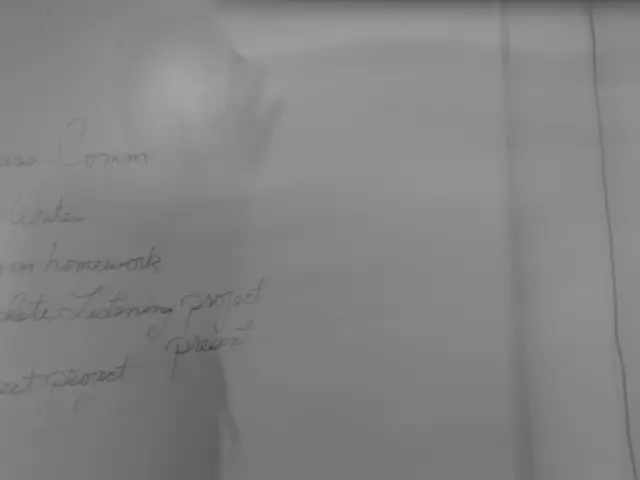Retrospective Distortion: Its Impact and Alteration of Our Judgments and Perspectives
Hindsight Bias: The Psychological Pitfall Affecting Decision-Making
Hindsight bias, colloquially known as the "I knew it all along" phenomenon, is a psychological inclination that causes individuals to perceive past events as more predictable than they actually were once the outcome has been revealed. In essence, we tend to exaggerate our foresight once the dust has settled. This can lead us to underestimate the unpredictability of certain situations, engendering an overconfidence in our predictive abilities.
Roots of Hindsight Bias
Behind the surface of this bias lie various causal factors, such as our cognitive architecture, and our innate inclination towards simplicity and resolution. These elements can pave the way for distorted memories of our predictions and exaggerated belief in our ability to foresee an event.
Examples of Hindsight Bias' Impacts
Hindsight bias exerts a pervasive influence in diverse realms, including the financial sector and healthcare, potentially impairing our ability to learn from experiences and adapt our decision-making strategies. By comprehending this bias, leaders can fortify themselves with the knowledge necessary for devising more calculated and well-informed strategies moving forward.
In the following sections, we delve deeper into this phenomenon, its drivers, instances, and consequences. We embark together on an exploration of techniques for identifying and countering hindsight bias to engender a more realistic and adjustable approach to decision-making.
Understanding Hindsight Bias
Consider hindsight bias analogous to surveying a cityscape through a rearview mirror. Every event appears clearer and more ordered once it's in the past, while the road ahead, with its uncertainties, remains less predictable despite its visibility. Hindsight bias operates on the same principle. After an event occurs, it tends to appear more predictable, though there was likely little reason to anticipate the outcome beforehand. The mechanism driving this bias stems from our fallible memory and our cognitive abilities' penchant for rationalization and forming coherent narratives.
Cognitive biases often work together, with hindsight bias and confirmation bias being no exception. Confirmation bias refers to our tendency to search for, interpret, or recall information in a manner that aligns with our preconceived notions. These biases can subtly distort risk assessments, business forecasts, and evaluations of prior decisions. Recognizing their presence and influence is the first stride in overcoming their impact on strategic leadership and decision-making.
Examining Hindsight Bias Through Examples
Imagine leaning back in your chair, cup of coffee in hand, as we explore real-world examples of hindsight bias that bring this concept to life. Let's begin with the dot-com bubble, a well-known business event from the late 1990s. Numerous investors, economists, and industry insiders were taken aback when the seemingly relentless growth of Internet companies suddenly came to a halt. However, in the wake of the crash, narratives emerged that suggested the signs had always been there and the collapse was inevitable.
People began pointing to inflated stock prices, the lack of viable business models among dot-coms, and unsustainable investor enthusiasm as clear indicators. Yet, these reasons were not always apparent amid the enthusiasm and opportunism surrounding the moment. This "I knew it all along" narrative is a prime example of hindsight bias at work.
One more cognitive bias angle, visual hindsight bias, involves our visual memory's distortion after exposure to an outcome. Imagine shading a color into a painting and feeling a pang of regret at the next step. Suddenly, you're convinced you should have gone for a different hue all along. In reality, your brain is merely connecting the dots in retrospect – that is visual hindsight bias.
When viewed through a business lens, such hindsight bias can subtly influence our understanding of situations and events, impacting risk assessments, business forecasts, and evaluations of past decisions.
Delving Deeper: Causes and Impact of Hindsight Bias
Our exploration continues as we delve into the underlying causes of hindsight bias. At its roots lie three primary cognitive processes: memory distortions, our innate craving for certainty, and our tendency to fabricate cohesive narratives.
Memory distortions play a significant role in shaping hindsight bias. By unconsciously altering our memories of past predictions to fit with the known outcomes, we persuade ourselves that we "knew it all along."
An overarching desire for certainty also fuels hindsight bias, as the illusion of predictability provides a secure harbor in a world riddled with unpredictability.
Lastly, our natural inclination to create coherent narratives from unrelated events often leads us to view outcomes as the anticipated and coherent result of preceding events.
The impact of hindsight bias extends to business leadership and decision-making, distorting perceptions of business events, projects, and market trends. By subtly convincing us that outcomes were more predictable than they truly were, hindsight bias fosters an illusory sense of confidence in our decision-making prowess, which, in turn, can amplify the dangers of overconfidence in future forecasts and decisions.
Moreover, hindsight bias can prevent us from learning from past experiences. If we believe that an outcome was predictable, we may fail to scrutinize the accurate causes of errors or successes, thereby missing valuable insights that could inform future decisions.
Finally, hindsight bias can impart a negative impact on evaluations of the decisions made by others. We may unjustifiably judge a colleague's "poor" decision based on the outcome, ignoring the reality that the outcome was not predictable when the decision was made.
By acknowledging these pitfalls, we equip ourselves with the tools needed to challenge and counteract the influence of hindsight bias on our decision-making processes, thereby enhancing the robustness of our business strategies.
Recognizing and Reducing Hindsight Bias
Countering hindsight bias starts with self-awareness. As leaders, we need to recognize that our recollections of past decisions can be distorted by known outcomes, leading to a more conscious evaluation of our thought processes when hindsight bias may be at play.
Stepping outside of our personal narratives by adopting the perspective of an external observer can create a broader, less biased view of a situation. Analyzing business decisions as if they were made by a different company or a different leader can help provide a more objective assessment.
Maintaining thorough documentation of the reasons and circumstances surrounding key decisions can serve as an invaluable reference point, helping to counteract the memory distortions that lead to hindsight bias.
Lastly, reflecting on past decisions, not only outcomes, but the variables, risks, and uncertainties at the time, can help paint a more accurate picture of the process and reduce the influence of hindsight bias.
By embracing these strategies, we can increase prediction accuracy by fostering an environment where the decision-making processes are respected just as much, if not more than the eventual outcomes. This, in turn, helps us better gauge our future predictions based on genuine past experiences rather than biased recollections, reducing the potential harm wrought by hindsight bias.
Tools and Mental Exercises to Increase Mindfulness of Cognitive Biases
Awareness of a cognitive bias like hindsight bias is crucial for fostering more objective and informed decision-making. Here are some tools and mental exercises to help raise your consciousness of cognitive biases:
- Journaling and Reflective Writing: Keeping a decision journal to record your decisions, the information considered, factors that influenced you, and the anticipated outcomes can help you identify cognitive biases. Reflecting on your entries regularly can bring hindsight bias and other biases to light.
- Thought Experiments: Engaging in thought experiments by considering alternative scenarios can help you see beyond the initial narrative and reduce the influence of hindsight bias, as it provides a broader perspective on potential outcomes.
- Mind Mapping: Using mind maps to visually organize information can help expose the relationships between different pieces of data, presenting a more comprehensive picture before an event occurred.
- Debiasing Techniques:
- Pre-mortem Analysis: Imagine that a decision has failed spectacularly and work backward to determine what could have gone wrong. This exercise helps uncover potential pitfalls before they occur, fostering a more thorough risk assessment.
- Red Teaming: Assemble a group tasked with challenging your assumptions and decisions. Their role is to provide alternative viewpoints and question the validity of your conclusions, helping to identify and mitigate biases.
- Mindfulness Meditation: Regular mindfulness meditation can boost self-awareness and emotional regulation, making it easier to recognize when cognitive biases are impacting your thoughts and decisions.
- External Feedback: Encourage a culture that values feedback within your organization. Seek input from colleagues or mentors on your decision-making process. Constructive feedback can provide insights into biases that may not be apparent to you.
- Scenario Planning: Develop multiple scenarios for potential future events and consider how each scenario could unfold. This practice broadens your perspective and helps prevent oversimplification of complex situations, thereby reducing the impact of hindsight bias.
- Blind Review Panels: Implement blind reviews for significant decisions by stripping away identifying information about the decision-makers. This anonymizing process can diminish the influence of individual biases and lead to a more objective evaluation.
With conscious awareness of hindsight bias forms a protective barrier, allowing us to discern when we might be rewriting our narratives in the fever of predictability. Armed with this knowledge and practical strategies, we can stride towards a business world illuminated by more objective and informed decision-making.
In conclusion, understanding and integrating strategies to counteract hindsight bias is essential for effective strategic planning and long-term business success. By fostering the ability to learn from our mistakes and recognize the inherent unpredictability of events, we can increase our prediction accuracy and drive our organizations towards sustained growth and future success.
- The impact of hindsight bias isn't limited to the financial sector and healthcare; it also permeates the realms of science and mental health, potentially impairing our ability to learn from experiences and adapt our decision-making strategies in these areas as well.
- In the pursuit of promoting health and wellness, understanding hindsight bias and adopting strategies to counteract it can empower mental health leaders, enabling them to base their strategies on genuine past experiences rather than biased recollections, thereby fostering more informed and effective decision-making in the field of mental health.





